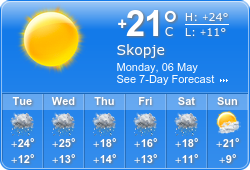After the Russian invasion of Ukraine, millions of citizens fled to European Union (EU) countries, including thousands of Roma in the country, where they were offered residence and residence and work permits under the EU Temporary Protection Directive.
Roma from Transcarpathia, however, were not treated the same. Despite Ukraine's ban on dual citizenship, many Roma from the region also hold Hungarian passports and identity documents and therefore did not qualify for EU temporary protection, meaning many of them ended up in collective centres.
However, a year later, thanks in part to Hungarian NGOs, many Roma from Transcarpathia are rebuilding their lives and finding a new home in Hungary.
According to the 2021 census, up to 150,000 ethnic Hungarians and tens of thousands of Roma live in Transcarpathia. As the poorest and most vulnerable group, the exact number of Hungarian Roma is unknown, but experts estimate that there are around 30,000-40,000 of them.
According to the largest Roma organization in Hungary, Romaversitas, the majority of Roma in Transcarpathia speak Hungarian as their main language, not Romani, Ukrainian or Russian. Many live in poverty, in segregated, fenced villages, and about one third live without running water, heating and electricity.
There are few jobs for Roma in Transcarpathia. According to estimates by Ukrainian non-governmental organizations, only 38 percent of the Roma population was employed, and due to the lack of local opportunities, many men from the region were already working in Hungary before the war.
However, this did not prepare them and their families for the conditions that many encountered in Hungary. "Refugees have arrived in a very broken system," said Lilla Eredics, spokeswoman for Romaversitas. "And Transcarpathian Roma are in an extremely vulnerable situation."
Excluding refugees, 876,000 Roma live in Hungary, which makes up almost nine percent of the population, the largest minority according to a 2018 study. Living in the region since the 15th century, the Roma mostly live in rural areas, especially in the poorer northeast and southwest. A large part of them is uneducated and unemployed, and many live in poverty.
Link: https://www.slobodnaevropa.org/a/madjarska-ukrajinski-romi-izbjeglice-siromastvo/32444055.html







